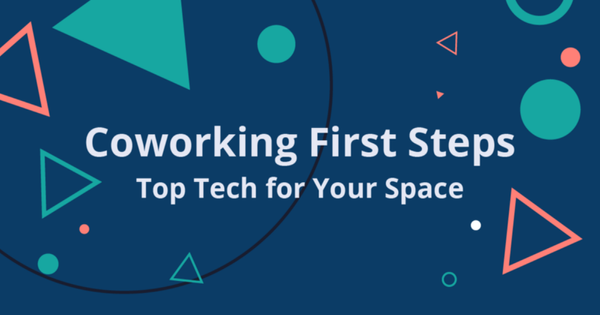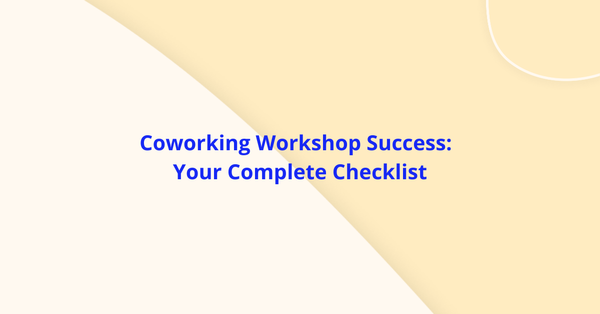Ky Willson and Rosalind Wyatt are the founders of the space CoInside in Houston (USA).
Both women keep themselves very busy: Ky has been an event planner for the past 11 years, and Rosalind started a non-profit organization, teaches marketing at the University of Houston, and shares her expertise with other business owners through her marketing consultancy.
They operate their businesses from their coworking space. This helps them interact very closely with their community, which in their opinion is the key for a sucessful coworking space.
Ky and Roz have shared with us their start in coworking, their vision of this new working trend, and solutions for the daily challenges of running a coworking space and forming a strong and inspiring community that lasts even after members move out of the space.
Location: Houston, TX, USA
Size: 5000 sq feet
Desk Seats: 62
Event Capacity: Up to 175 guests
How did you meet and how did the idea of opening a coworking space take shape in your mind?
Ky: Our children were in school together. We come from the field of education, me being a high school teacher and Roz in the college level. We had some conversations about education and started to talk about some of the other things we did besides teaching.
I wanted to have a location to organize events on evenings and weekends. Roz started a non-profit organization, Sustainable Houston, and was looking for a place to bring businesses together, to have resources to communicate, collaborate, and sustain business in the local community.
We started to consider what would be the best collaboration between us. What Roz is doing happened during the day, and what I do happens in evenings and weekends, so we started looking at ways to do that efficiently. And that’s when, about a year ago, we came across the coworking model.
South by Southwest is the place where we first heard about the concept, although you know here in Houston we have another coworking space, Caroline Collective. We knew a little bit about it and about what they did, but we didn’t really understand the concept and what it was actually all about until South by Southwest.
What is your vision of coworking?
We see individuals, who come together, but still keep their own individual goals and dreams — their world.
The United States was often called a melting pot, where everybody came together, from many different cultures and backgrounds. But now people are starting to see that we are more like a salad bowl. There are different types of ingredients, and when you put all these together, you get a salad. Each ingredient keeps its individual look and flavor — a tomato is still a tomato and lettuce is still lettuce — but when they’re mixed together, they make a delicious dish.
So this is how we see coworking. We are in the space, but each of us has different ways of working and a different approach to their business. The mix shouldn’t come out like a soup, where there is just one flavor, but rather the result should be like a tasty salad, a really good salad, where everybody can be good together but still uniquely themselves.
What issues did you have at the beginning, and how did you solve them?
That was an interesting journey! We were looking for coworking spaces on our own. Houston is traditionally a city with a big presence of gas and oil industries, and every commercial location is managed differently. Many people did not understand that we did not want a business suite location.
We came across a commercial broker who really got the concept, Matthew Goldsby. Thanks to his help, we were able to find the very best location for us in our fifth proposal. It is a historic building, a restored firehouse from 1905, with two stories, brick walls, hardwood floors, features from the original building, big windows… The space is so unique that people love it both for coworking and socializing, so we are able to really showcase our tagline: Coworking, Collaborating, Social Gathering.
So how does a day in your life typically look like? How do you run your space?
That changes day to day! We are open from half past eight in the morning to six in the evening each day. We start our day with coworkers coming in at different times, from nine o’clock. We have dedicated desks upstairs, and shared desks for our flex plans and drop ins downstairs, and there is a lot of moving between these two spaces. Often we have meetings with people that are instrumental parties to our coworking space, maybe about an event, or with a vendor. Usually around lunch time there are more coworkers moving about. In the evenings, there are often meetings, seminars, courses, workshops, networking or large social events, but that can also happen after six. Of course, in between we have all the phone calls and drop ins, as well as visitors who are considering the space! It’s a wonderful experience each day meeting new people and having them make connections in the community!
As for running the space, we have an intern who recently started working, and we externalized the IT. On the technical side, we use cobot for membership management and the booking calendar. We try to make members very self-sufficient in that regard, unless it’s a special event. We use the CRM Highrise to track our contacts.
What advice would you give to someone is considering running a coworking space?
When we started, we did plenty of research and went through a lot of educational materials, such as the workshops by Alex Hillman from IndyHall. There is a lot of information out there now, and you should take advantage of it!
What I still do is look at coworking spaces websites regularly. All of these communities have their own personality: some are more formal, and some are more casual, where people bring dogs and have skateboards. I would encourage you to take some ideas; there is no wrong, you just have to do what fits you the best, but you have to be comfortable with what you’re doing. Stay true to who you are.
Make your community feel that they are taking part in it. The key is concentrating on how you build the community, engaging people, making them want to be part of your space, even if they outgrow you. This can happen, for example, when some of your coworkers will start a small business. But if they still remain members, interact, and engage, then they still feel like part of the community, and they always want to be connected. Even if you leave us fiscally, you still want to come by and say hi, and participate in our events.
I think ultimately what it all comes down to is the community. Take this part seriously, look at what other people have done and are doing, connect with other coworking spaces, collaborate, find the best practices, and craft your own individual identity.
Visit CoInside’s cobot space


